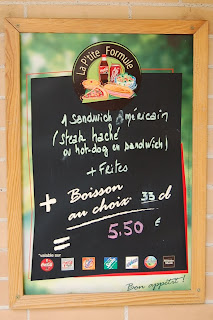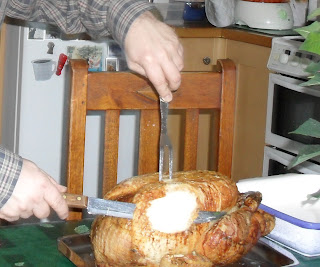 It is not only here where the locomotive was restored and is maintained; throughout the year Le Creusot is the starting point for trips, often made in double traction with the Mistral - the name of the 241P17, to places like Mulhouse, Aix-en-Provence, Lyon, Dijon or Marseille, using the SNCF network. The loc was designed by the French engineer André Chapelon, the inventor of the Compound loc. I quote a friend of mine, an expert on steam and trains: “Compound machines are machines with small high pressure and big low pressure cylinders. The steam expands in two steps from boiler pressure to atmospheric pressure. When starting up all steam goes full on the cylinders; once at speed the compound cylinders are utilised. The machines are not easy to handle, but the French were experts at it.”
It is not only here where the locomotive was restored and is maintained; throughout the year Le Creusot is the starting point for trips, often made in double traction with the Mistral - the name of the 241P17, to places like Mulhouse, Aix-en-Provence, Lyon, Dijon or Marseille, using the SNCF network. The loc was designed by the French engineer André Chapelon, the inventor of the Compound loc. I quote a friend of mine, an expert on steam and trains: “Compound machines are machines with small high pressure and big low pressure cylinders. The steam expands in two steps from boiler pressure to atmospheric pressure. When starting up all steam goes full on the cylinders; once at speed the compound cylinders are utilised. The machines are not easy to handle, but the French were experts at it.”One can see the Mistral regularly in the neighbourhood, because quite a number of the train’s trips are coming past or through Chalon, Chagny, Tournus and Mâcon. In Chalon, Tournus and Mâcon there is normally a long stop to enable the Anoraks to shoot their films, photos or sound bites. The picture with this Blog was taken while the train came towards a viaduct near Chagny with a speed of approx. 100 km/h. What is more thrilling than seeing this piece of technical ingenuity ploughing through the beautiful Burgundian landscape?
The website of La Tuilerie de Chazelle


















 Our company statistic cum bookkeepster cum housewife cum cook has been cooking the books again. As she did last year, she made a stunningly sharp analysis of all those people who made our campsite a success.
Our company statistic cum bookkeepster cum housewife cum cook has been cooking the books again. As she did last year, she made a stunningly sharp analysis of all those people who made our campsite a success.
























